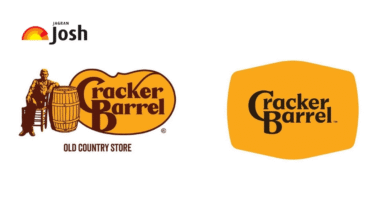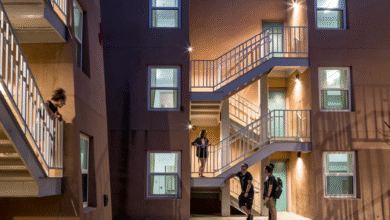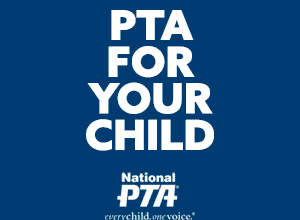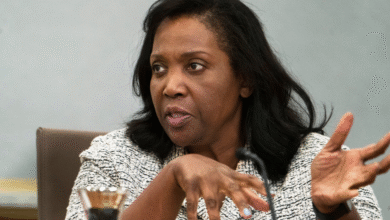Tesla Robotaxi Plans Face Regulatory Challenges in California
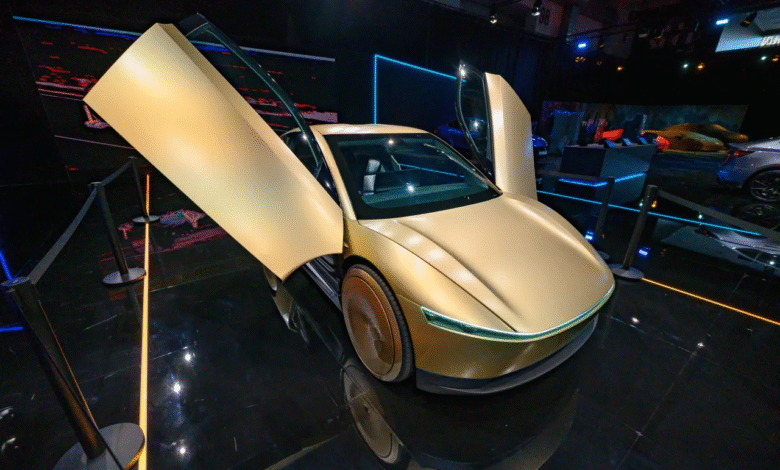
Tesla robotaxi services are at the forefront of innovation in autonomous transportation, as CEO Elon Musk recently hinted at plans to expand this revolutionary driverless car service in the San Francisco Bay Area. Despite this exciting news, California regulations currently pose significant hurdles, as Tesla does not possess the required permits to launch a fully autonomous operation. According to state officials, the company may only run a limited service, akin to traditional taxis, where human drivers are present, undermining the ambitious vision of a fully self-driving fleet. Nevertheless, Tesla’s advancements in autonomous vehicles, including its innovative Model Y, continue to attract attention, stirring excitement about the potential for robotaxi expansion. As the industry evolves, balancing technological aspirations with regulatory constraints will be crucial for Tesla in realizing its plans in California and beyond.
The emergence of Tesla’s driverless taxi initiative represents a transformative shift in urban mobility, with implications for both transportation and regulatory frameworks. Often referred to as an autonomous ride-sharing service, this venture aims to redefine how individuals perceive and utilize personal transport. While the company’s advanced driving technology promises unprecedented convenience, it faces scrutiny from state authorities, who emphasize the necessity of regulatory compliance. This ongoing dialogue highlights the challenges of integrating innovative solutions into existing infrastructures, especially in terms of compliance with California’s regulatory measures. As Tesla navigates these complexities, the broader discussion regarding the future of self-driving vehicles and their role in society continues to unfold.
Tesla’s Robotaxi Plans in the Bay Area
During a recent earnings call, Tesla CEO Elon Musk dropped hints about expanding their Robotaxi services into the San Francisco Bay Area. This announcement generated considerable buzz in the tech community, particularly as Tesla continues to lead the charge in autonomous vehicle technology. However, California regulators remain skeptical, as the company lacks the necessary permits for a fully driverless car service. The regulatory landscape in California poses a significant challenge for Tesla as it seeks to innovate and expand its operation in a key market.
Despite these hurdles, Tesla has expressed its intent to launch a pilot program allowing friends and family to use its driverless vehicle technology. This plan, however, must comply with California’s strict regulations on vehicle operation, which currently restrict driverless self-driving cars without a human present at the wheel. Hence, while the Robotaxi expansion may hold great potential, its realization is contingent on navigating the intricate legalities and ensuring compliance with state regulations.
Navigating California’s Regulatory Landscape
California’s regulatory environment poses a unique challenge for Tesla as it navigates the complexities of deploying autonomous vehicle systems. The California Public Utilities Commission has made it clear that, while Tesla holds a charter-party carrier permit allowing for private vehicle services, this does not extend to transporting passengers in autonomous vehicles without a driver. This limitation underscores the cautious approach adopted by local authorities in the face of rapid technological advancements in the driverless car sector.
Furthermore, Tesla’s existing “drivered testing permit” allows the operation of its vehicles with a human driver present but prohibits charging for rides when operating autonomously. These stipulations force Tesla to focus its initial Robotaxi services on non-autonomous vehicle models, reinforcing the necessity of human oversight in its services for the time being. This regulatory framework adds layers of complexity to Tesla’s plans, which must be carefully navigated to ensure compliance and avoid potential legal disputes.
Autonomous Vehicle Testing in Other States
While Tesla faces significant regulatory hurdles in California, developments in other states showcase the company’s ongoing experimentation with autonomous vehicle technologies. In Austin, Texas, Tesla is actively testing its Robotaxi service using Model Y vehicles equipped with advanced driving software. This initiative exemplifies an effort to refine autonomous capabilities under controlled conditions, as tests are limited to specific weather and speed parameters where human oversight remains a requirement.
This strategic approach allows Tesla to gather data and insights from real-world usage, which could be pivotal for future scalability. Notably, the progress in Texas may offer valuable lessons that can be applied back in California, should regulatory barriers eventually ease. Thus, while regulatory environments differ across states, Tesla’s commitment to advancing its autonomous vehicle offerings persists, reflecting Elon Musk’s ambition to revolutionize transportation.
Consumer Concerns and Legal Challenges
As Tesla pushes forward with its Robotaxi ambitions, consumer confidence and legal scrutiny remain critical factors in the company’s trajectory. Recent reports highlight concerns that Tesla may mislead consumers regarding the capabilities of its driver assistance systems. Such perceptions can adversely affect public trust, especially as the company navigates an increasingly attentive regulatory landscape in California.
If allegations of misleading advertising arise, they could potentially trigger legal challenges that impact Tesla’s vehicle sales. Transparency regarding the operational capabilities of its autonomous systems will be essential for mitigating these risks. Local officials have expressed a need for clear communication from Tesla about their new service offerings to ensure that community members feel informed and considered, as this could influence the acceptance of autonomous vehicles in urban environments.
The Importance of Community Communication
In light of the proposed Robotaxi service expansion, community communication has emerged as a vital aspect of Tesla’s operational strategy. Local officials advocate for open dialogue with community stakeholders to alleviate concerns and foster trust as Tesla rolls out its autonomous initiatives. Engaging with residents can provide Tesla with valuable feedback and insights crucial for developing a service that meets the needs and expectations of the public.
Moreover, efficient community engagement could pave the way for smoother regulatory approvals and a more positive reception as the company seeks to integrate autonomous vehicles into California’s transportation ecosystem. Therefore, Tesla must prioritize transparency and dialogue in its expansion plans, ensuring that the voices of local residents are at the forefront of its operational framework.
Future Directions for Robotaxi Expansion
Looking ahead, Tesla’s plans for Robotaxi expansion hinge on overcoming current regulatory challenges while continuously advancing its autonomous technology. The company aims to strengthen its operational capabilities in the San Francisco Bay Area, pending necessary approvals from California regulators. By focusing on rigorous testing and data collection in environments like Texas, Tesla hopes to refine its technology and pave the way for successful implementation in highly populated urban centers.
Elon Musk’s vision for a driverless car service signifies a transformative shift in the transportation realm, and robotaxi services could revolutionize urban mobility. Ultimately, balancing regulatory compliance with innovation will be key to ensuring Tesla’s long-term success in expanding its autonomous vehicle services.
Impact of California Regulations on Autonomous Vehicles
California’s regulations directly impact the advancement of autonomous vehicle technologies, as they govern the operational landscape for companies like Tesla. The California Department of Motor Vehicles has instituted stringent guidelines to ensure public safety while allowing for innovation in the driverless sector. Tesla’s operational permits framework illustrates how compliance with these regulations is a dual-edged sword, enabling progress while imposing necessary restrictions.
While some see these regulations as a hindrance, others argue that they are critical for protecting consumers. This balancing act between promoting innovation and safeguarding public interests may dictate the pace of Tesla’s Robotaxi deployment. Thus, ongoing dialogue between Tesla, regulators, and the broader community is essential for navigating the challenges posed by California’s regulatory environment.
Elon Musk’s Vision for Autonomous Vehicles
Elon Musk’s vision for Tesla extends beyond electric vehicles to encompass fully autonomous transportation solutions, including the Robotaxi service. His determination to advance autonomous technologies stems from the belief that driverless cars have the potential to significantly reduce traffic accidents and improve urban mobility. However, this progressive vision clashes with the practical regulatory landscape, particularly in California, highlighting the tension between innovation and oversight.
Musk’s approach emphasizes rapid development and iterative improvements, yet he must also account for regulatory compliance and public perception. Ultimately, his ambitious plan for a comprehensive driverless car service reflects a commitment to reshaping the future of transportation, despite the current hurdles faced in regulatory approvals and community acceptance.
Challenges Ahead for Tesla’s Robotaxi Initiative
As Tesla gears up to launch its Robotaxi initiative, numerous challenges lie ahead that could impede its progress. Chief among these are regulatory hurdles that complicate operational permits, particularly in highly regulated states like California. The necessity of securing appropriate licenses for transporting passengers in autonomous vehicles adds layers of complexity to Tesla’s strategic plans.
Moreover, public sentiment plays an equally crucial role in the acceptance of autonomous technologies. Addressing consumer concerns about safety, reliability, and the ramifications of transitioning to a driverless transport model will be paramount for Tesla as it seeks to establish a foothold in the Robotaxi marketplace. If these challenges are met with transparency and engagement, Tesla may successfully leverage its innovations to achieve substantial growth.
Frequently Asked Questions
What is Tesla’s robotaxi service and how does it relate to Elon Musk’s vision for autonomous vehicles?
Tesla’s robotaxi service is part of CEO Elon Musk’s broader ambition to revolutionize transportation through autonomous vehicles. This service aims to provide a driverless car experience, allowing consumers to hail rides without a human operator. However, regulatory hurdles in California pose challenges to its full implementation.
What are the current California regulations impacting Tesla’s robotaxi expansion plans?
California regulations currently prohibit Tesla from operating its robotaxi service without a human driver. The California Public Utilities Commission requires a licensed driver to be present during operations, limiting Tesla’s ability to launch a fully autonomous robotaxi service in the state.
Can Tesla operate a driverless car service in California right now?
No, as of now, Tesla cannot operate a driverless car service in California due to lack of necessary permits. The California Department of Motor Vehicles mandates that Tesla can only conduct operations with a human driver, further complicating their robotaxi service ambitions.
What permits does Tesla currently hold for its car service in California?
Tesla holds a charter-party carrier permit, allowing them to operate a private car service with human drivers. However, this permit does not authorize the company to transport passengers using autonomous vehicles without a driver present.
How does Tesla’s testing of robotaxi services in Austin differ from potential operations in California?
In Austin, Tesla is testing its robotaxi service with Model Y vehicles under specific weather and speed conditions, allowing for human oversight. In contrast, California’s stricter regulations do not currently allow for any autonomous vehicle operations without a human driver.
What measures is Tesla taking to address regulatory scrutiny about its robotaxi plans?
In response to regulatory scrutiny, Tesla has communicated its intention to operate a ‘friends and family’ car service in California while seeking clarity and compliance with all necessary regulations. Local officials have emphasized the importance of transparency in these initiatives.
What concerns have been raised regarding Tesla’s robotaxi service and consumer safety?
Concerns regarding Tesla’s robotaxi service primarily focus on the potential for misleading consumers regarding its driver assistance systems. Legal challenges related to these issues could affect Tesla’s vehicle sales and public perception in California.
What technologies are involved in Tesla’s robotaxi service?
Tesla’s robotaxi service leverages advanced driving software and its fleet of electric vehicles, including Model Y. This technology enables features like automated navigation and driver assistance, though current regulations necessitate the presence of a safety driver.
How is Tesla’s robotaxi service expected to impact the taxi market in California?
If fully implemented, Tesla’s robotaxi service could significantly disrupt the taxi market in California, offering a potentially cheaper and more efficient alternative to traditional taxi services. However, regulatory limitations are currently restricting its launch.
What potential benefits could Tesla’s robotaxi service bring to communities?
Tesla’s robotaxi service could enhance mobility options, reduce traffic congestion, and promote environmentally-friendly transportation solutions in communities. However, the successful integration of such services relies on adherence to regulatory frameworks and community consultation.
| Key Point | Details |
|---|---|
| Expansion Plans | Tesla CEO Elon Musk hinted at expanding Robotaxi services to the San Francisco Bay Area. |
| Regulatory Status | California regulators stated Tesla lacks necessary permits for driverless service, only allowing private car services with human drivers. |
| Current Operating Permit | Tesla holds a charter-party carrier permit which permits private car services with human operators but not autonomous ones. |
| Testing in Austin | Tesla is testing a robotaxi service in Austin using Model Y, under strict weather and speed conditions with human oversight. |
| Community Concerns | Local officials express concern over potential consumer misrepresentation, regulatory scrutiny, and the need for community consultation. |
Summary
The Tesla robotaxi service envisions a revolutionary advancement in transportation but faces regulatory hurdles in California. Despite optimistic expansion plans, the company must navigate the legal landscape to ensure compliance, addressing community concerns, and enhancing transparency. As these developments unfold, the success of Tesla’s robotaxi initiative depends on its ability to adhere to regulations while innovating in the autonomous vehicle space.

